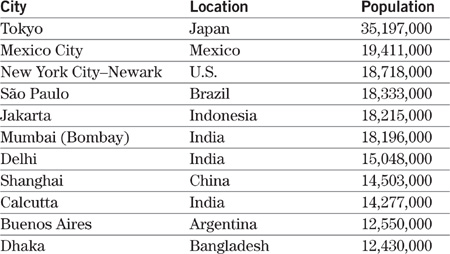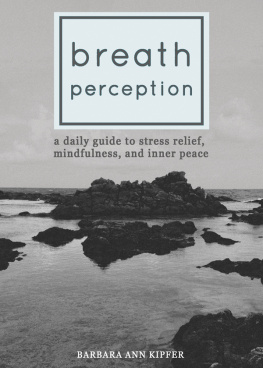THE ORDER OF THINGS
HIERARCHIES, STRUCTURES, AND PECKING ORDERS BARBARA ANN KIPFER, Ph.D.
WORKMAN PUBLISHING NEW YORK Copyright 2008 by Barbara Ann Kipfer All rights reserved. No portion of this book may be reproducedmechanically, electronically, or by any other means, including photocopyingwithout written permission of the publisher. Published simultaneously in Canada by Thomas Allen & Son Limited. Library of Congress Cataloging-in-Publication Data is available. eISBN 9780761166139 Design by Katherine Tomkinson and Lisa Hollander
Illustrations by Neil Stewart Photo Credits: Shutterstock: 8, 1011, 83, 84 (top), 90 (both), 108 (center), 128 (top 3 and bottom 4), 178179, 146147, 187, 265, 306, 340, 415, 421, 525 (both), 526 (all), 539 (all); 542 (right), 545 (all); 546 (all), 547, 551, 570; clipart.com: 230; courtesy of U.S. Army: 358.
Workman books are available at special discounts when purchased in bulk for premiums and sales promotions as well as for fund-raising or educational use. Special editions or book excerpts also can be created to specification. For details, contact the Special Sales Director at the address below or send an e-mail to specialmarkets@workman.com. Workman Publishing Company, Inc.
225 Varick Street
New York, NY 10014-4381
www.workman.com This book is dedicated to
the guys who put up with all my
orders of things
Paul
Kyle
and Keir
(in age order!) And special thanks to
Randall Lotowycz, Suzie Bolotin,
and Peter Workman
for their tremendous help.
PREFACE
The world is not to be put in order, the world is in order. The Order of Things offers just that: a comprehensive schema, a storyboard of the world. The Order of Things offers just that: a comprehensive schema, a storyboard of the world.
So many things in our world are related, but how often do we know how? So many subjects and things have a structure, but how often are we aware of what its hierarchy actually is? From the inner workings of the smallest things to the complex system of the universe, this book is an attempt to cover all those things that we have organized, or that we find naturally organized, into: SUCCESSIONSSTRUCTURESSEQUENCESSCALESRANKINGSORDERSHIERARCHIESDIVISIONSCLASSIFICATIONSBRANCHES We know these orders exist, but have you ever tried to look one up? One can easily enough find the plant and animal kingdoms in the encyclopedias, but how about the organization of the Boy Scouts, the Mafia, or sumo wrestling ranks? Want to know the largest islands in the world? Curious about what each line on a UPC code signifies? Would you like to learn the path of an e-mail message? Now you have a place to look. The Order of Things contains orders from 13 general areas which may apply to ones work, studies, or personal interests. In the book, around 400 orders are covered so that the user may take a wide look at the universe, and at the same time choose to look at narrower views of particular subjects. The book puts the multilayered world into clearer focus by presenting the frameworks and orderings of the mass of information, and can even work as a creativity tool. Its logical structure and word associations can assist in brainstorming, aid in preliminary research, and provide a source of words and facts for writing or fun.
CHAPTER 1
THE EARTH
Here hills and vales, the woodland and the plain, Here earth and water seem to strive again Where order in variety we see, And where, though all things differ, all agree.
CHAPTER 1
THE EARTH
Here hills and vales, the woodland and the plain, Here earth and water seem to strive again Where order in variety we see, And where, though all things differ, all agree.
Alexander Pope, Windsor Forest
ATMOSPHERE
AIR QUALITY INDEX
(established by the Environmental Protection Agency as a measure of air pollutants: carbon monoxide, nitrogen dioxide, ozone, sulfur dioxide, and particulates)050: good, no cautionary status
51100: moderate, no cautionary status, however some pollutants may affect a very small number of people
101150: unhealthy for sensitive groups, no cautionary status
151200: unhealthy, alert for elderly or ill to stay indoors and reduce physical activity
201300: very unhealthy, alert for general population to stay indoors and reduce physical activity
301500: hazardous, emergency alert, all stay indoors, windows shut, no physical activity
ATMOSPHERIC LAYERS
Homosphere: lower of two portions of atmosphere, from surface to 5062 mi (80100 km)
Heterosphere: upper of two portions of atmosphere, above 5062 mi (80100 km)
Troposphere: 011 mi (18 km), where life and weather are concentrated
Tropopause: layer joining tropo- and stratospheres
Stratosphere: 1130 mi (1850 km); includes ozonesphere
Stratopause: layer joining strato- and mesosphere
Mesosphere: 3150 mi (5080 km); also called lower ionosphere; airglow and ozone band
Mesopause: layer joining meso- and thermosphere
Thermosphere: 50250 mi (80400 km)
Thermopause: layer joining thermo- and exosphere
Exosphere or magnetosphere: 25040,000 mi (40064,000 km)
D-layer or D-region: 3555 mi (5688 km); absorbs energy of short-wave radio waves reflected by other layers
Kennelly-Heaviside layer, E-layer, or E region: 5595 mi (88154 km); during the day, reflects radio waves
Appleton layer, F-layer, or F region: 95250 mi (154400 km); reflects radio waves of up to 50 Mhz
FOUR WINDS OF GREEK MYTHOLOGY
Four Directions
Boreas: north
Notus: south
Eurus: east
Zephyr: west
In-Between Directions
Euroauster: southeast
Afer: southwest
Caurus: northwest
Euroclydon: northeast
HUMIDEX HUMIDITY SCALE
(A scale devised to measure comfort layers in extreme heat, based on the temperature and relative humidity.)2029: comfortable
3039: some discomfort
4045: uncomfortable for everyone
46+: many types of work must be stopped
SMOG ALERT STAGES
Stage 1: up to .20 parts per million (caution to those with heart and respiratory conditions)
Stage 2: up to .35 parts per million (caution against strenuous exercise)
Stage 3: over .35 parts per million (emergency: schools close, people remain indoors)
CAVES
DEEPEST CAVES
(The deepest cave was discovered in 2001.)
CITIES
LARGEST URBAN CENTERS












